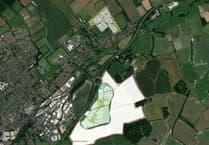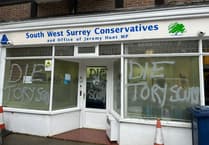Each year, the FARNHAM GREAT WAR GROUP picks a name from a local war memorial – sometimes several names – and heads across the Channel to find the final resting place of those brave individuals who paid the ultimate sacrifice in the defence of their nation. This year’s trip held even greater personal significance for those involved, writes Scott Bell...
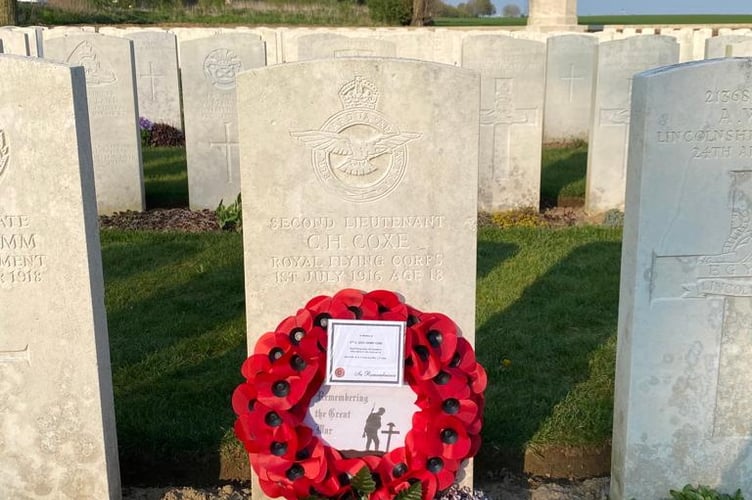
It is April 18, 2023, and we have travelled to a wooded area to the south-east of Ypres. We stand as near as possible to the spot where my grandfather, Lance Corporal Thomas (Tom) Dee, a member of the 18th Battalion, London Regiment (London Irish Rifles) carried out an attack on the German front line during the night of April 7-8, 1917. This area was known as the Bluff Sector of the British trenches at that time.
It’s a beautiful spring morning with the trees in new leaf, standing tall, swaying gently in the breeze, birds singing and the sun shining. A housing estate has been built on the ridge. It’s a peaceful place and life as we recognise it is carrying on. It is hard to imagine the total devastation of 100 years ago.
Malcolm takes us through the events of the night of the April 7-8, 1917. Calmly we listen and take in the information. The operation is an exact duplicate of the 6th Battalion’s raid of February 20. The fighting was intense and out of 500 men, 196 were either killed, wounded or missing.
We try to imagine what it must have been like. The best we can do is to be quiet in the moment and grapple with the madness that went before.
From there we walk down to Wood Cemetery. Like all CWGC war cemeteries, it is kept in excellent condition; the grass mown, the edges trimmed, the gravestones uniform and in line. The first stone I read says “A Soldier of The Great War” and “Known Unto God”. There are so many with the same inscription.
Back in the van, Peter drives us to Bedford House Cemetery. It’s a large burial ground with more than 2,000 fallen contained within it. I’m advised the bodies of the dead are not necessarily under the headstones but are probably somewhere within the cemetery. Again, it’s a beautiful place.
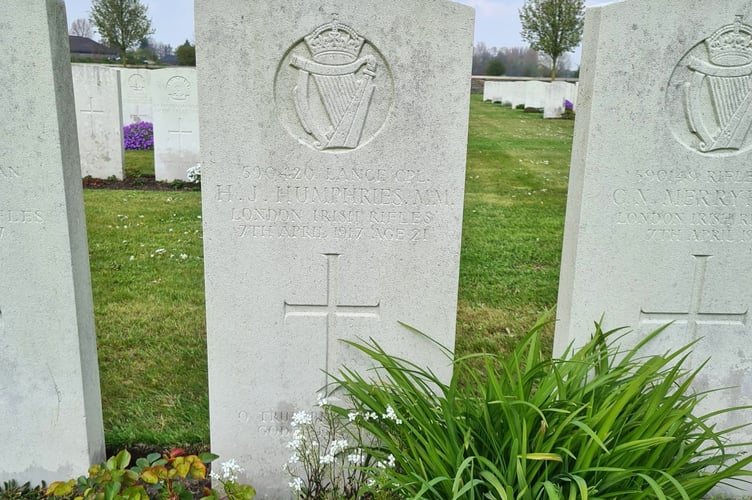
We walk over to the gravestones of 2nd Lt H.B Wilson and of L/Cpl H. J. Humphries who were both killed on April 7-8, 1917. It is very likely Tom would have known these men. I find this very moving, maybe more moving than at The Bluff, because the harsh reality of death and the real names on real headstones of real men who were just as brave and maybe braver than my grandfather are right there in front of us.
Luck, or the lack of it, plays such a decisive role in life and nowhere more so than on the front line.
I feel humbled by these experiences. I reflect on my life and what I was doing at their age. I think the worst thing we had to deal with was 15 per cent interest rates! Peace has reigned over Western Europe and most of Eastern Europe for the whole of my life. But, with the war in Ukraine, it is clear nothing is certain and despite all the lessons we claim to have learned over the past 100 years, greed, hatred and destruction are alive and well in the human condition.
I heard a Ukrainian academic on the radio say he always thought he was born after the war but now says he was born between the wars.
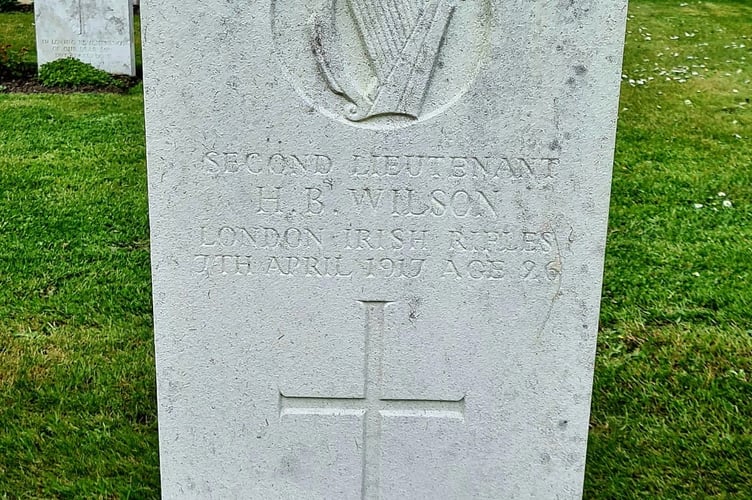
We journey on to Annoeullin Communal Cemetery and I see German graves for the first time. It is much more austere than the British, but just as well maintained. We note the presence of Jewish gravestones among the metal crosses. I’m surprised and pleased to see them there. It is also surprising to see the impressive grave of Captain Albert Ball VC DSO and two bars, MC, Mentioned in Despatches, Royal Flying Corps, 56th Squadron, formerly 7th (Robin Hood) Bn. Sherwood Foresters (Notts and Derby Regiment) who died on May 7, 1917, aged 20. In his all-to-brief flying career he destroyed 43 enemy planes and one balloon. An incredible young man. I’m again forced to think of what I was doing when I was 21.
But in that cemetery, there is some real reconciliation. The place is as well kept and respected as the British cemeteries. There is a British officer buried among German soldiers, Jews and gentiles buried side by side and fighting men buried adjacent to the local folk.
At the Maroc British Cemetery Malcolm told us about Pte W. Hunter, shot at dawn for desertion at the age of 18. I’m not sure what to do with this story. Looking at it through 21st century eyes, it seems outrageous to execute anyone. I suppose, however, if you are trying to get men to walk into machine-gun fire, they need to see that as a better option than not doing it. You have two choices: be killed or be murdered? Different times.
The Canadian National Vimy Memorial is stunning. We see it in the afternoon. The sun is out, there is a breeze. It continues to be a delightful spring day. The site is immaculate. There are not many visitors. Walking up to the memorial, there are moments when it is completely clear of people. The view from the front of the monument over the Douai Plain is wonderful. Again and again, I’m challenged about what I can see and what actually happened here. More than 10,000 men killed, wounded or missing over four days, starting the day after Tom had his moment. Four VCs were won, underscoring Malcolm’s contention that the Canadian Corps really did get things done.
Finally, for day one, we lay a wreath to 2nd Lt C.H. Coxe Royal Flying Corps, 6th Squadron, at Point-du-Jour Cemetery. He failed to return from a bombing raid on Cambrai on July 1, 1917. His two brothers were also killed in the war. All three are on the roll of honour at St Thomas-on-the Bourne Church. I like the symbolism of finding someone from Farnham and paying our respects to them. It connects us all.
I had a great trip. Special thanks to Malcolm for digging into the story of my grandfather and for sharing so much knowledge throughout.
Thanks to Pete for all the driving. And thanks to everyone else for making my first trip so enjoyable.

